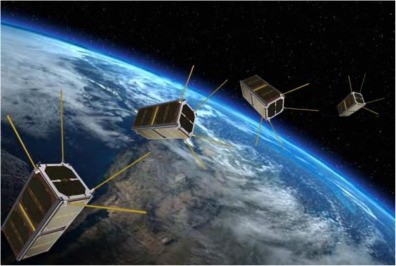As we delve deeper into the space age, the need for more adaptable, intelligent, and autonomous satellite systems has become paramount. The emergence of software-defined satellites (SDS) and networks is set to revolutionize how we think about and utilize space technology. The traditional satellite network architecture consists mainly of the …
Read More »Photonics-Based Supercomputers: New Breakthroughs Pave the Way for the Future of Computing
In the rapidly evolving world of technology, photonics-based supercomputers are emerging as a groundbreaking innovation, poised to revolutionize the computing landscape. Recent breakthroughs in photonic technology are enabling the development of supercomputers that promise unprecedented speed, efficiency, and computational power. This article delves into the advancements that are propelling photonics-based …
Read More »Exploring VxWorks: A Comprehensive Guide to Real-Time Operating Systems
Introduction: In the realm of embedded systems, real-time operating systems (RTOS) play a crucial role in ensuring deterministic behavior, reliability, and performance. Among the array of RTOS options available, VxWorks stands out as a leading choice, renowned for its robustness, real-time capabilities, and versatility across various industries. In this comprehensive …
Read More »Revolutionizing Space Security: AI-Enabled Satellite Swarms
As our reliance on satellite technology continues to grow, ensuring the security of these vital space assets has become increasingly crucial. Traditional space-based systems, often characterized by single, large satellites, are giving way to more advanced and flexible configurations. One groundbreaking advancement is the integration of artificial intelligence (AI) with …
Read More »Satellite Swarms and Formation Flying: Revolutionizing Space Missions
The increasing capabilities of Micro, Nano, and CubeSats, coupled with their short development times and reduced launch costs, are revolutionizing Earth observation missions. These small satellite missions are increasingly favored over traditional large satellites, offering flexibility and cost-effectiveness. Two primary topologies are Satellite Constellations and Satellite Formation Flying. In the …
Read More »NCSC Assessment: Evaluating the Impact of Artificial Intelligence on Cyber Threats
As the digital landscape continues to evolve, the intersection of artificial intelligence (AI) and cybersecurity emerges as a focal point for policymakers and security experts alike. The National Cyber Security Centre (NCSC) Assessment (NCSC-A) provides invaluable insights into the evolving cyber threat landscape, particularly concerning the potential impact of AI …
Read More »Maximizing Performance and Minimizing Costs: The Role of Satellite Constellation Modeling & Simulation
Introduction Satellite constellations have revolutionized the way we communicate, navigate, observe the Earth, and conduct scientific research in space. However, as the demand for satellite services continues to grow, so does the need for cost-effective and efficient network . This is where satellite constellation modeling and simulation play a crucial …
Read More »Unraveling the Marvels of Google DeepMind: Pioneering the Future of Artificial Intelligence
Introduction: In the ever-evolving landscape of artificial intelligence (AI), few entities have garnered as much attention and acclaim as Google DeepMind. Founded in 2010 by Demis Hassabis, Mustafa Suleyman, and Shane Legg, DeepMind has rapidly emerged as a trailblazer in the field, pushing the boundaries of what AI can achieve. …
Read More »Powering the Future: Why AI Needs a Clean Energy Breakthrough
As artificial intelligence (AI) continues to advance at an unprecedented pace, experts are increasingly recognizing the critical importance of energy breakthroughs to sustain its growth. Artificial intelligence (AI) is rapidly transforming our world, from facial recognition software to self-driving cars. But this incredible progress comes at a hidden cost: energy consumption. …
Read More »The Dark Side of AI: How FraudGPT is Revolutionizing Cybercrime
In today’s digital age, cybercriminals are constantly seeking new tools and techniques to exploit vulnerabilities and deceive unsuspecting individuals. One such tool gaining prominence in the realm of cybercrime is FraudGPT, an AI chatbot designed to mimic human communication and perpetrate various fraudulent activities. In this article, we’ll delve into …
Read More » International Defense Security & Technology Your trusted Source for News, Research and Analysis
International Defense Security & Technology Your trusted Source for News, Research and Analysis

